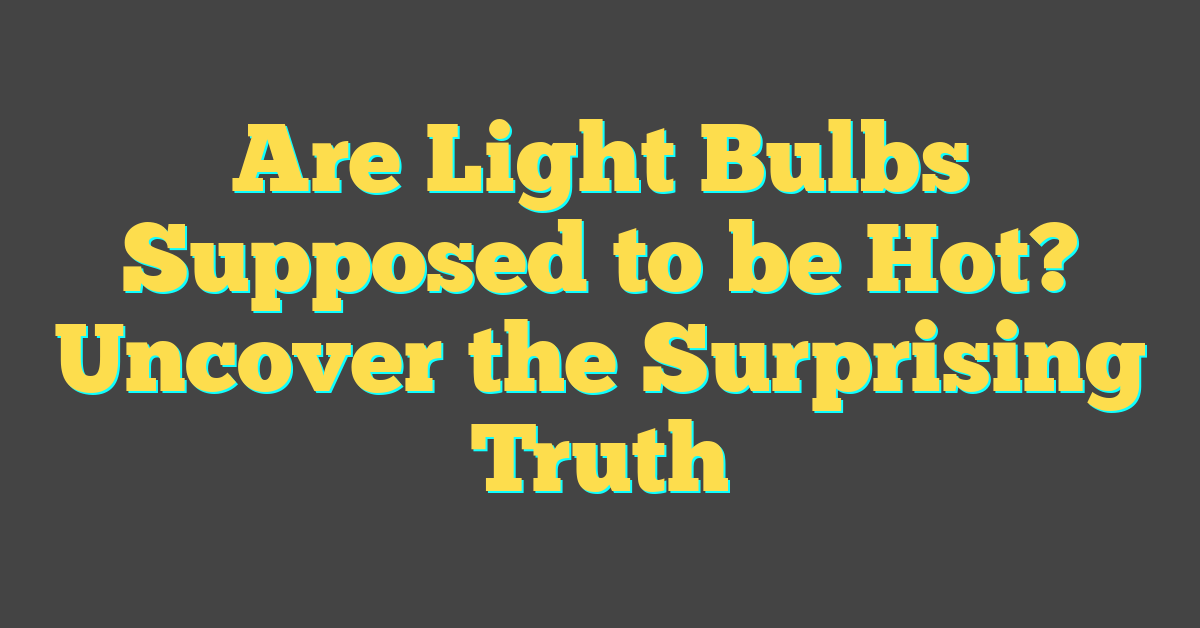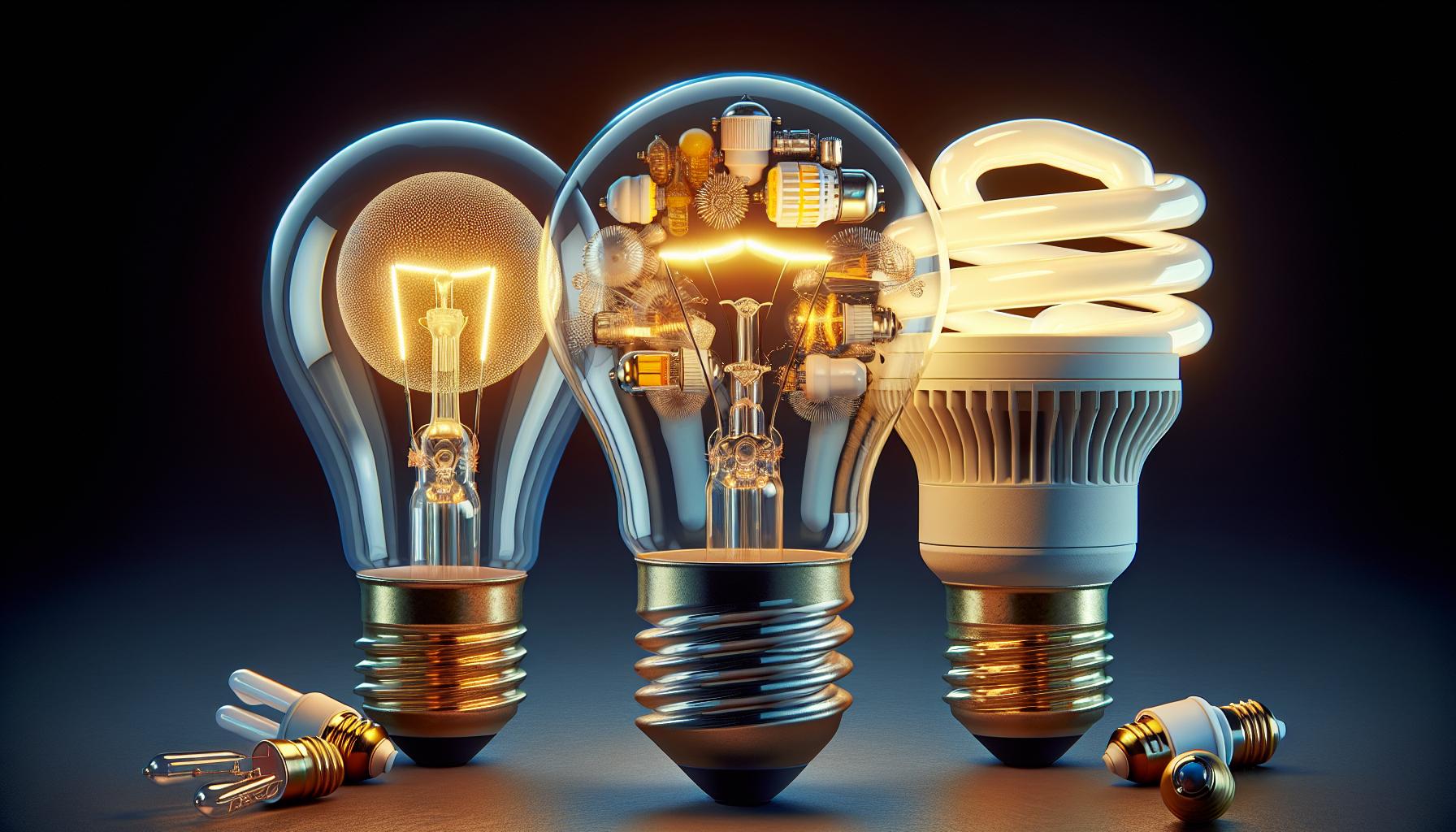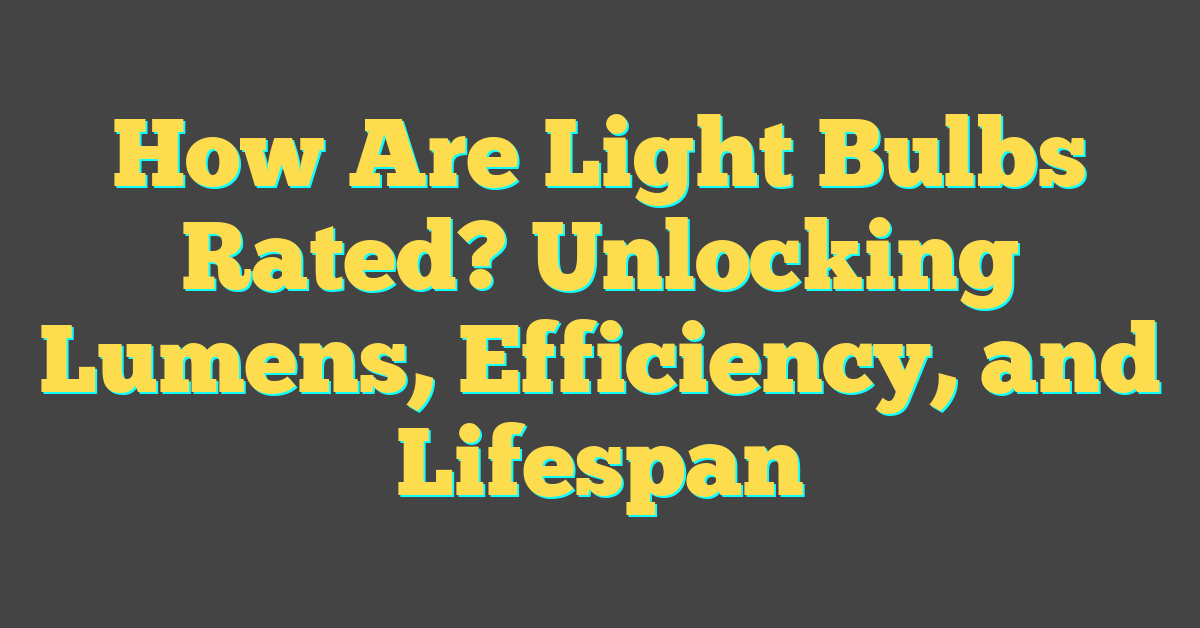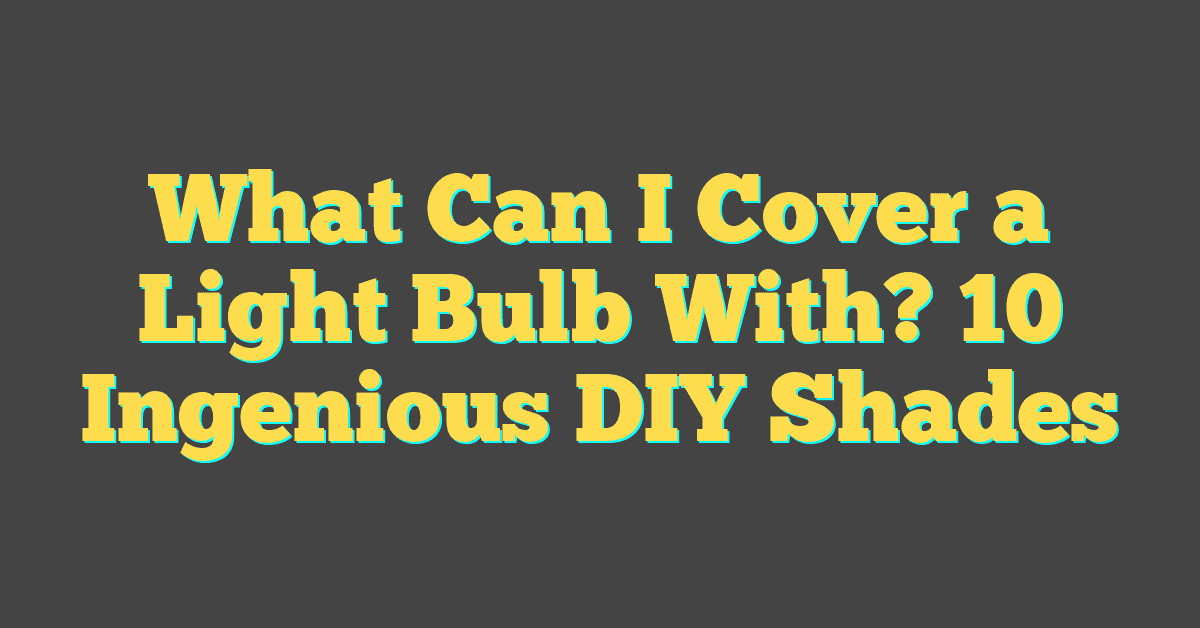Ever reached up to change a light bulb and been met with a surprising sizzle of heat? You’re not alone. It’s a common experience, but have you ever paused to wonder why light bulbs get hot in the first place?

Understanding the heat behind the light can be both intriguing and practical. After all, nobody wants to learn about bulb temperatures the hard way—ouch! Let’s shed some light on what’s normal for these everyday illuminators.
Why do Light Bulbs Get Hot?
Imagine you’ve just finished a satisfying DIY home project, and you’re basking in the warm glow of your newly installed lighting. That warmth you feel isn’t just pride—it’s also a byproduct of the light bulbs themselves. Let’s dive into why light bulbs generate heat and what makes them hot to the touch.
All light bulbs convert electricity into light, but in the process of that conversion, some energy is lost as heat. It’s physics in action, specifically the principles regarding energy conversion. For instance, traditional incandescent bulbs are particularly notorious for this, as they operate by running an electrical current through a filament, which then heats up to the point that it glows, producing light.
Here’s a key fact: Incandescent bulbs convert only about 10% of their energy into light, while the remaining 90% becomes heat. As a lighting and DIY enthusiast, you know there are cooler options. CFLs (compact fluorescent lamps) and LEDs (light-emitting diodes) are designed to be more energy-efficient, reducing wasted heat. Still, even these bulbs will dispel some heat—it’s just substantially less in comparison to their incandescent counterparts.
- Incandescent Bulbs: 90% heat, 10% light
- CFLs: Considerably cooler with lower heat dissipation
- LEDs: Most energy-efficient, minimal heat output
The material and build of a bulb also factor into how hot it gets. A bulb’s envelope, or the glass part, can become hot to the touch, depending on the nature of the materials used and the design of the bulb. Moreover, the wattage of the bulb correlates with heat production—the higher the wattage, the more heat it’s likely to generate.
Always take precautions when dealing with light bulbs, especially after they’ve been on for a while. You wouldn’t want your latest home project to result in accidental burns. And don’t forget to consider energy efficiency in pursuit of the ideal balance between brilliant light and manageable warmth.
The Science Behind Bulb Temperatures

When you flip that switch, a silent but rapid transformation occurs within your bulb: electrical energy zips through the filament, generating light to brighten your room. However, only a fraction of that energy emerges as visible light. Delve a bit into physics, and you’ll find the law of conservation of energy at play. This law indicates energy can’t be destroyed; it only changes form. So the electricity that doesn’t become light turns into heat.
Incandescent bulbs are notorious heat generators due to their design. Inside, a thin metal wire, usually tungsten, rises to high temperatures when electric current passes through. The sheer heat needed to light the thin filament concludes with excess thermal energy — hence, a hot bulb. It’s similar to the way a toaster browns your bread. Touch a recently used toaster, and voila, the same sizzling surprise (sans the light).
For a more touch-friendly option, you might explore CFLs (Compact Fluorescent Lamps) or LEDs (Light Emitting Diodes). Here’s the cooler part: CFLs wrap an electric current around a tube containing gases, resulting in ultraviolet light that prompts the fluorescent coating inside the tube to glow. LEDs, the coolest customer in the lineup, employ a semiconductor that emits light when an electric current passes through it. Not only do these technologies boast improved energy efficiency, but they also stay much cooler to the touch.
Factors Influencing Bulb Heat
The temperature your bulb reaches also hinges on several variables:
- Wattage: The higher the wattage, the hotter the bulb. It’s a direct correlation between energy usage and heat output.
- Material and Design: Bulbs crafted with heat-dissipating materials like aluminum tend to run cooler.
- Environment: Bulbs in enclosed fixtures or small spaces with limited airflow can reach higher temperatures.
Understanding the dynamics of bulb temperatures helps in selecting the right fixture for any space. Whether you’re after that cozy, warm glow or a bright, chill beam for your DIY crafts, there’s a light for every occasion, and knowing the ins and outs ensures you’re never left in the dark—or the heat.
Different Types of Light Bulbs and Heat Output

When you’re waist-deep in your latest home DIY project, the last thing you want is the excess heat from a bulb messing with your mojo. But not all light bulbs are created equal regarding heat output. Let’s shed some light on the different types of bulbs and how much heat they typically generate.
« When Did Light Bulbs Become Common? The Surprising History Revealed
Why Do We Need Light Bulbs? Unlocking The Secrets To A Brighter, Safer Home »
Incandescent bulbs, despite their classic charm, are notorious heat generators. 90% of the energy they consume is emitted as heat rather than light. That’s why they can get just as hot as the plot twist in your favorite mystery novel.
Next in line, halogen bulbs pack a brighter punch with a slightly better efficiency than their incandescent cousins. However, they still tend to run quite hot, which is something to keep in mind when positioning lamps or choosing fixtures for your artful spaces.
Switching to compact fluorescent lights, or CFLs, flips the script. CFLs use about 70-80% less energy than incandescents, which translates to substantially less heat. They’re cooler to the touch and friendlier to both your energy bill and the ambient temperature of the room.
At the pinnacle of efficiency, you’ve got LED bulbs – the swiss army knife of the lighting world. They’re champions in energy conversion, with over 80% of the energy powering the bulb being transformed into light. This high efficiency means that LEDs produce significantly less heat, making them the go-to choice for long-term illumination without the added warmth.
Here’s a quick breakdown of the average heat output you might expect from each type:
| Bulb Type | Heat Output |
|---|---|
| Incandescent | Very High |
| Halogen | High |
| CFL | Low to Moderate |
| LED | Low |
Remember the role of wattage and material in heat production from our previous discussion. Higher wattage generally means more heat, regardless of the type of bulb. And the materials used in and around the bulb can affect how heat is managed and dispersed. If you’re gearing up for your next project, consider the space and how these bulbs’ heat outputs might impact the overall vibe and temperature of your environment.
Safety Considerations and Dealing with Heat

When handling light bulbs, safety should always be your top priority. High temperatures generated by certain bulbs can pose a burn risk and can even start a fire if in close proximity to flammable materials. Here’s what you need to consider:
- Incandescent and Halogen Bulbs: These get extremely hot; directly touching one that’s been on even for a short time can lead to a burn. Keep these bulbs away from items that can catch fire and allow them to cool before handling.
- CFLs: While cooler than their incandescent counterparts, they can still get quite warm. Moreover, they contain mercury, so if a CFL breaks, you’ll need to follow proper cleanup guidelines to avoid mercury exposure.
- LED Bulbs: These are your safest bet—they remain much cooler during operation. Still, it’s prudent to give them a moment to cool down before you touch them, especially if they’re in a closed fixture that might accumulate heat.
When installing lighting, you should also keep airflow and material in mind. Make sure your fixtures allow for proper ventilation to help disperse heat. Avoid using materials that are sensitive to heat in your DIY light projects. Metals are great for dissipating heat, while plastics can be more sensitive and are best paired with cooler-running bulbs like LEDs.
On a room level, consider the collective heat output of all your bulbs. In smaller, enclosed spaces, a single high-heat bulb might not be a concern, but a collection of them can significantly raise the room’s temperature. Opting for energy-efficient bulbs that produce less heat is both a safety measure and a way to keep your cooling costs down.
Always check the maximum wattage rating on your lamps and fixtures. Exceeding this rating doesn’t just have the potential to damage the fixture; it dramatically increases the risk of overheating and fire. Stick with the manufacturer’s recommendations, and if you’re looking to push boundaries with your lighting design, opt for bulbs that give the illusion of high wattage without the risk.
Remember, your lighting choices aren’t just about aesthetics and energy efficiency; they actively contribute to the safety and comfort of your home.
Conclusion
So, when you’re picking out your next set of bulbs, remember to weigh in their heat output along with their brightness and energy efficiency. LEDs might just be your best bet for a cooler, more comfortable space. And don’t forget, handling bulbs safely and minding their placement can save you from a literal hot mess down the line. Stay mindful of the heat contribution each bulb makes and always stick to the recommended wattage for a safe, well-lit environment. Your fingers—and your peace of mind—will thank you.
Frequently Asked Questions
What type of light bulb generates the most heat?
Incandescent bulbs generate the most heat, emitting about 90% of their energy as heat rather than light.
Are LED bulbs cooler than other types of light bulbs?
Yes, LED bulbs are significantly cooler since they convert over 80% of their energy into light, producing minimal heat.
Do wattage and material affect a light bulb’s heat production?
Wattage and the bulb’s material both impact the amount of heat it produces, with higher wattage and certain materials increasing heat output.
What safety considerations should be taken with light bulbs?
One should be careful of burns and fires caused by hot bulbs, ensuring that there is proper ventilation and that materials around the bulbs can resist heat.
Why is it important to check the maximum wattage rating of lamps and fixtures?
Checking the maximum wattage rating helps prevent overheating and fire risks, as exceeding the rating can lead to excessive heat build-up.




